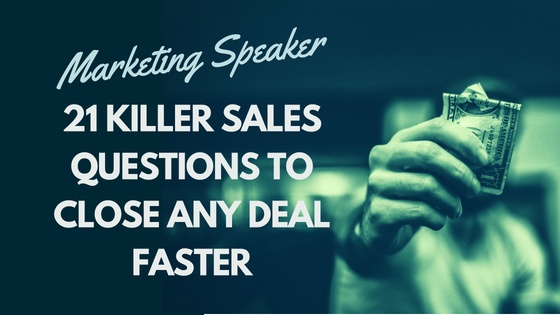 Marketing Coach: 6-Step Secret Sauce for Awesome Email Subject Lines
Marketing Coach: 6-Step Secret Sauce for Awesome Email Subject Lines
Guest post by Corey Eridon
How many emails do you receive every day? And across how many accounts? The Radicati Group reported that 1.9 billion non-spam emails are sent every day. Most people aren't reading every one of those emails (do you?), and the way people determine which ones to open and which ones to trash is by looking at the email subject line. It may be one of the smallest components of your email marketing strategy, but it's the keeper between the reader and your message. That's a pretty hefty 50-something characters.
As one of the most crucial parts of your email message, you should dedicate serious time to crafting that copy. But if you know the secret sauce for writing an awesome email subject line, you'll find you need less and less time as you practice and learn what resonates best with your audience. Next time you draft an email message, use this recipe to formulate a great email subject line that will help you get your message in front of more eyes.
The Ingredients
- Deliverability
- Actionability
- Personalization
- Clarity
- Brevity
- Consistency
The Recipe
Step 1 - Check for deliverability. There are two kinds of filters you need to get past: actual SPAM filters, and your readers. Readers have a BS detector up when checking their inboxes, and it's as sharp as a bloodhound's nose. Avoid spammy words like "free," "act now," and "limited time." Don't yell at the reader by using all caps, like "REMINDER," which is another spammy word that should be avoided. Also, steer clear of excessive use of punctuation marks such as dollar signs and exclamation points at the end of sentences.
Step 2 - Make it actionable. To have an actionable subject line, ask yourself one thing: does the reader know what he or she can do in the email? An email subject line is similar to writing a call-to-action; using verbs helps create the sense of urgency and excitement you want them to feel when reading your subject line. For example, a well written email subject line reads, "Meet the Legendary Ming Tsai at Blue Ginger," versus the less actionable "Ming Tsai at Blue Ginger." With the first subject line, I know I could do something in this email to help me meet Ming Tsai, as opposed to the second, where for all I know, Ming Tsai just went to Blue Ginger last night.
Step 3 - Personalize. The only way you can provide value to your email recipients is by knowing them...even just a little bit. And if you've segmented your subscriber list like every email marketer should, you do know something about your recipients! Your email subject line should reflect that you're sending something thatthey want. For example, a realtor may have a segmentation just for renters looking for an apartment in a certain zip code. Reflecting this knowledge in your subject line, such as "View a Vacant 2 Bedroom Apartment in Muskegon" will drive up the value of that email for the recipient.
Step 4 - Scrub for clarity. You know what your recipient will get if they open the email, but try to step out of your own shoes for a moment. Is it clear to an outsider? If your subject line is too broad, it won't resonate. This often happens when email marketers try to be witty with subject lines. If you can find a way to be clever and straightforward, go for it, but never at the expense of clarity. Can you further help recipients identify what the email is about by putting identifying keywords in the beginning of the subject line, alerting someone that their favorite item is on clearance? Include it at the beginning of the subject line.
Step 5 - Edit for brevity. You could write a haiku to your recipient, but it's to your benefit to keep the subject line as short as possible. A good rule of thumb is 50 characters or fewer. Not only do you want as much of it as possible to display in the email pane (especially on mobile devices), but people are quickly scanning their inboxes to decide what to read, and what to delete. The shorter your subject line, the less likely you are to get glossed over.
Step 6 - Ensure consistency. What the subject line promises should correspond with what is delivered in the email. Think about getting an email with a subject line that promises 75% off men's clothing, only to find out that it only applies to men's socks. The old bait and switch frustrates people and leads to lower open rates, lower click through-rates, and higher unsubscribe rates.
As with any recipe, testing is required for best results. Experiment with different verbs, reorder your words, and try different offers to see which ones resonate the most with your recipients.
Have you tested your email subject lines?
Use the COMMENTS are below to share YOUR email subject line secrets of success!



 If you are looking to write a book, produce audio, video, or online assets, package a coaching or consulting program, or otherwise "productize" your expertise, keep reading... you'll like this post.
If you are looking to write a book, produce audio, video, or online assets, package a coaching or consulting program, or otherwise "productize" your expertise, keep reading... you'll like this post.  Snappy.
Snappy.
 Here's the first in a series of marketing and business book reviews - but not just any old business books.
Here's the first in a series of marketing and business book reviews - but not just any old business books.




